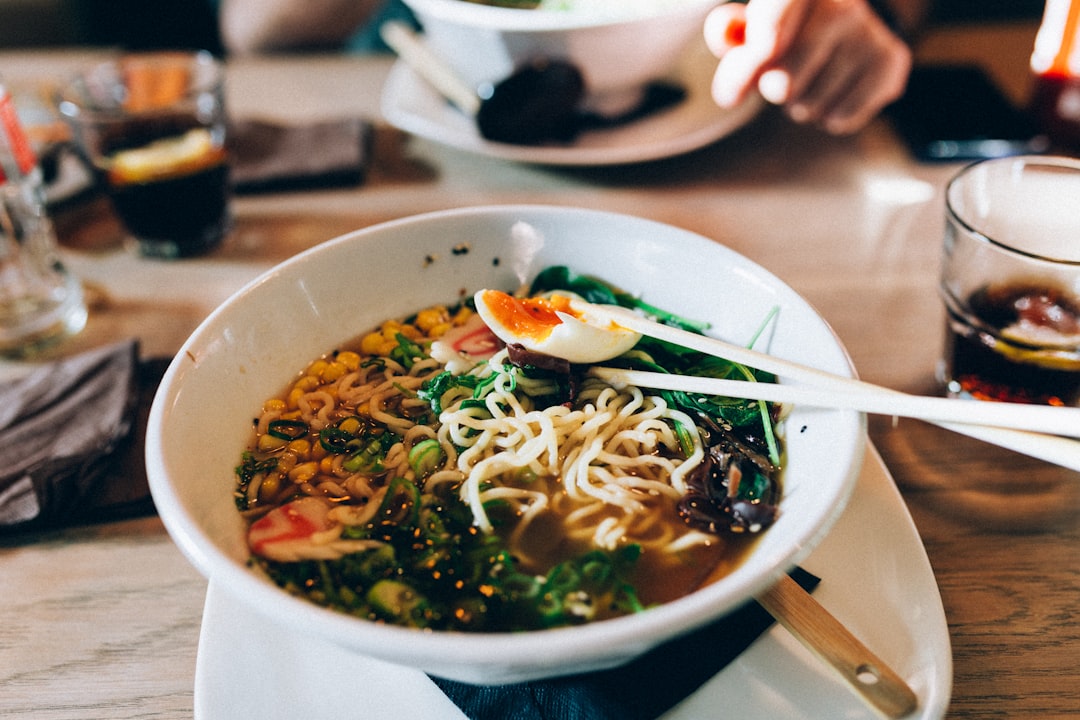Dashi
As any passionate foodie worth their salt knows, Japanese cuisine is characterized by its subtle yet sumptuous flavors, and none more so than the essential ingredient that gives it so much flavor, Dashi. The pungent, umami-filled elixir is made from an exquisite blend of kelp, bonito flakes and sometimes dried shiitake mushrooms, and is found in many iconic dishes in the Land of the Rising Sun.
For the uninitiated, dashi is a largely transparent liquid with a deeply earthy aroma, with a hint of sweetness that lingers on the tongue. It's also highly valued for its use of healthy ingredients as it is an excellent source of vitamins, minerals, and trace elements. As well as being incredibly nutritious, dashi also serves as the foundation of several well-known dishes such as miso soup, tofu dishes, and noodle dishes.
Dashi has been a staple of Japanese cuisine for centuries, and is part of the culinary fabric of the country. To make dashi, you will need either kombu seaweed or katsuobushi – dried, fermented and smoked skipjack tuna flakes – and a few simple seasonings. The kombu seaweed is boiled for about 10 minutes and then strained off, before adding the bonito flakes to the broth. The result is a unique elixir of salty and savory flavors, with an unmistakable aroma that adds depth to whatever dish it is used in.
The subtle taste and slightly smoky aroma of dashi make it an ideal base for a variety of dishes, and it can be used either as a stand-alone seasoning, or in combination with other flavors such as soy sauce and mirin (rice wine). In addition, dashi makes an excellent marinade for fish and vegetables, and gives food a beautiful aroma and flavor.
Ultimately, dashi is an essential part of Japanese cuisine, and is one ingredient that should never be overlooked. It has a deep, earthy taste and aroma, as well as a host of nutritional benefits, and can be used in a wide range of dishes, from soups and noodle dishes to marinades and stocks. With its powerful umami-filled elixir, dashi brings out the best in traditional Japanese cuisine.
Dashi recipes
Amazing Dashi recipes sourced from the web.
The origin of Dashi
For something so fundamental to Japanese cuisine, the origin of dashi is surprisingly shrouded in mystery. Even historians have difficulty pinpointing its exact beginnings, as if it were some ancient tale that has been passed down for generations.
One legend holds that the original formulation of dashi was sought after by an enterprising and ambitious monk. This monk wanted to create a flavor that could bring out the delicate nuances from fish and vegetables and thus did much experimentation with various herbs and spices. The legend says that upon tasting his finished product, he declared it a miracle sauce - and his invention, dashi, was born!
It is also believed that the original form of dashi was created by fishermen along the coast of Japan. Bored with their daily rations of bland salted fish, they began experimenting with local foods and herbs to add flavor. Through trial and error, they stumbled upon the combination that would become dashi; one that would bring out the flavor in grilled or boiled fish and vegetables.
Regardless of which story you choose to believe, there is no denying the importance of this broth in Japanese cuisine. It is a foundation - an essential ingredient that adds subtle nuances to soups, sauces, and dishes, creating a unique and delicious flavor. An ingredient essential for all authentic Japanese dishes, dashi’s mysterious beginnings serve as an indication of its fascinating history.
Types of Dashi
Dashi is a broth, brimming with flavour and essential to many Japanese dishes. It has been around for centuries, giving depth and savoury notes to popular classics like udon noodles and miso soup. There are actually several types of dashi, and while they all have their similarities, they can go a long way in lending unique and delightful nuances to the dishes they are used in.
One type of dashi is kombu dashi, which is made by steeping dried kombu seaweed in water, resulting in a complex and subtly sweet liquid. The mild and umami-rich broth can be used to flavour any number of ingredients and dishes, making it the ideal base for noodle soups and fish-based broths.
Another type of dashi is awase dashi, which combines two distinct and fragrant components - dried kelp and bonito flakes - to create a light, yet savoury flavour. This type of dashi is great for seasoning Tempura and making dressings, as well as adding subtle notes of complexity to clear soups.
For those looking to avoid fish-based ingredients, there is another option: iriko dashi. This type of dashi is made with skipjack tuna flakes and sardine flakes and is perfect for everyday cooking, as its relatively mild flavour makes it an excellent choice for a range of dishes.
Finally, for a more robust and intense flavour, there is niboshi dashi. This dark and smoky type of dashi is made from small dried fish, usually anchovies or sardines. It is a great choice for soups and sauces, adding a rich and salty element that won't be easily forgotten.
Overall, these are just a few of the types of dashi that can be used in the kitchen. Whether you're looking for a light and subtle flavour or a smoky, intense one, there is sure to be a type of dashi that will work perfectly in your dish. Experiment with different flavours and textures to find the one that best suits your palate.



